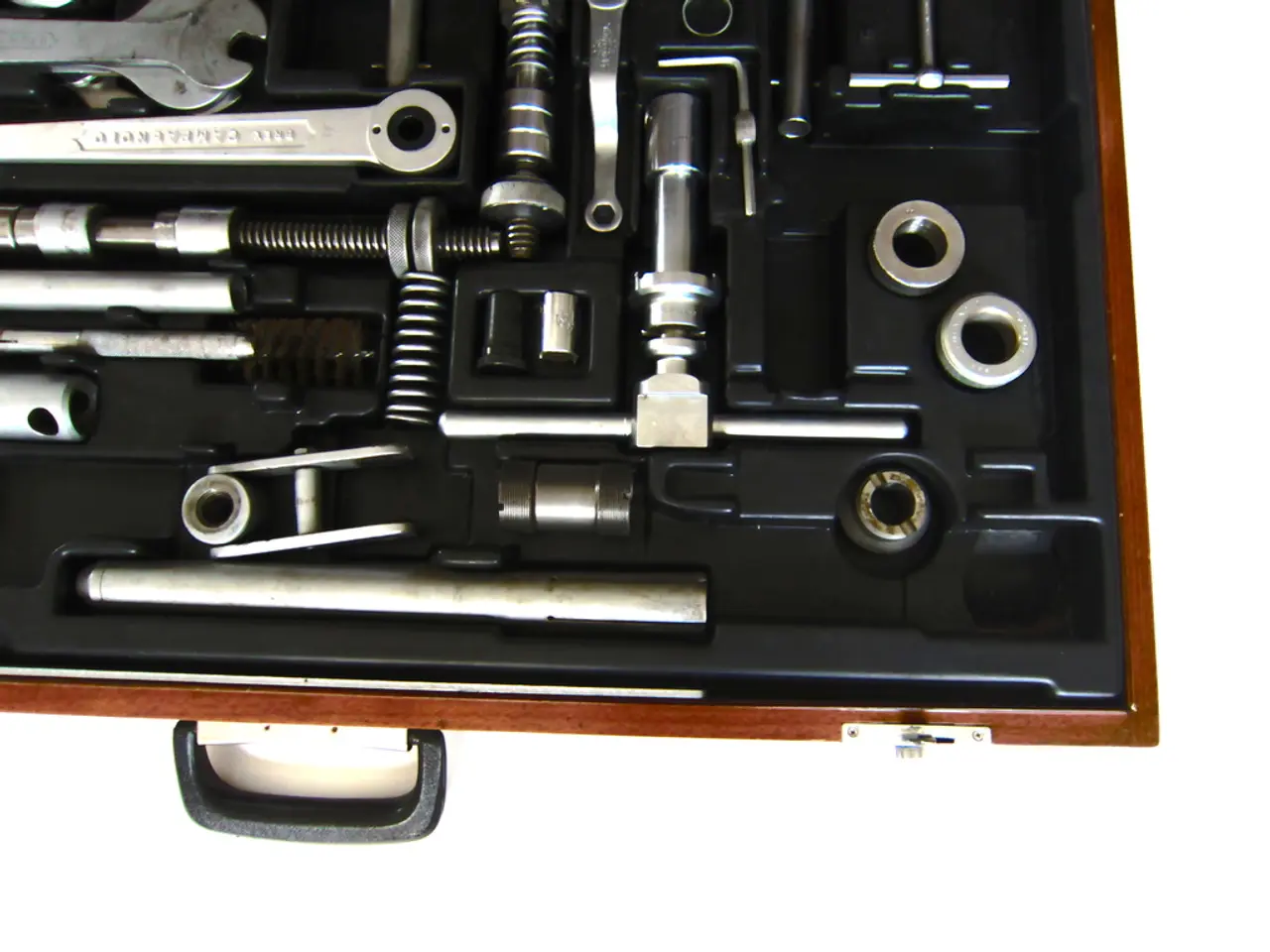Space station water recycling is crucial for extended missions - a discussion with an environmental engineer on the ISS's wastewater treatment process
In the microgravity environment of the International Space Station (ISS), every drop of water is precious. The ISS water recovery system collects and recycles water from various sources, including urine, cabin air moisture, and hygiene activities. This system, a component of NASA's environmental control and life support system, plays a crucial role in managing water resources efficiently.
The heart of this system is the Water Processor Assembly (WPA), which purifies wastewater through several stages involving filtration, chemical treatment, and catalytic oxidation. This process removes contaminants such as urea, salts, soaps, organic compounds, and microorganisms, producing potable water that often exceeds many Earth-based drinking water standards.
Urine, in particular, is processed in the Urine Processor Assembly (UPA). The UPA uses centrifugal force to separate water vapor from contaminants, with the vapor then combined with other wastewater and treated in the WPA. The system also includes microfiltration beds, catalytic reactors, and ion exchange beds that dose biocides like iodine or silver ions to prevent microbial growth and maintain water safety over long durations.
The ISS water recovery system currently recycles about 93% of liquid wastewater, reducing the need to supply fresh water by about 65%, or roughly 2,850 liters per year. However, challenges lie ahead for increasing the water recovery rate for future long-duration missions to Mars.
One such challenge is managing higher concentrations of contaminants in space wastewater, which demand more robust, efficient purification methods. Another is ensuring reliability and minimal maintenance, as systems must function for years without replacement parts, operating in microgravity without hands-on intervention.
Microbial control is another critical issue, particularly for long missions. Advanced biocide dosing systems are needed to maintain microbial safety without harmful chemical buildup or excessive maintenance. Research is ongoing to optimize dosing of agents like silver ions to balance effectiveness and safety for up to 1000-day missions or longer.
Ensuring a fully closed-loop system with near-total water recovery is essential for Mars missions, where resupply is impossible. New architectures, like those proposed for Martian settlements, emphasize robust, closed-loop recycling combined with in-situ resource utilization (ISRU), such as extracting water from subsurface ice, to meet crew needs sustainably.
Scalability and crew time are also key challenges. Larger crew sizes and mission durations increase water demand and system complexity, so scaling water recovery while managing crew workload is a crucial consideration.
Advances in closed-loop systems, robotic support, and autonomous operations are inching the dream of putting humans on Mars closer to reality. Before NASA developed an advanced water recycling system, water made up nearly half the payload of shuttles traveling to the ISS. The new brine processor on the ISS has increased the water recovery rate enough that the 98% goal is now within reach.
As NASA prepares to send humans on multiyear expeditions to Mars, space agencies around the world are focusing on improving propulsion and perfecting life support systems. Berrin Tansel, a Professor of Civil and Environmental Engineering at Florida International University, is one of many researchers working to ensure a sustainable future for space exploration.
[1] "Water Recovery on the ISS: A Closed-Loop System for Long-Duration Space Missions," NASA (2021). [2] "Water Recycling on the ISS," NASA (2021). [3] "Microbial Safety in Space: Challenges and Solutions," NASA (2021). [4] "Water Recovery for Mars Missions: Closed-Loop Systems and ISRU," NASA (2021).
- The space economy, particularly in regards to Mars missions, will be significantly impacted by advancements in space-and-astronomy, such as the development of efficient space-and-astronomy technologies for water recovery systems.
- The space industry is focusing on research in environmental-science and technology, with an emphasis on solving the challenges in managing water resources for long-duration missions, like maintaining microbial safety and scaling closed-loop water recovery systems.
- By improving the operating efficiency of water recovery systems on the International Space Station and developing new methods for in-situ resource utilization on Mars, the science community can help pave the way for a sustainable space economy and human exploration beyond our current limits.




